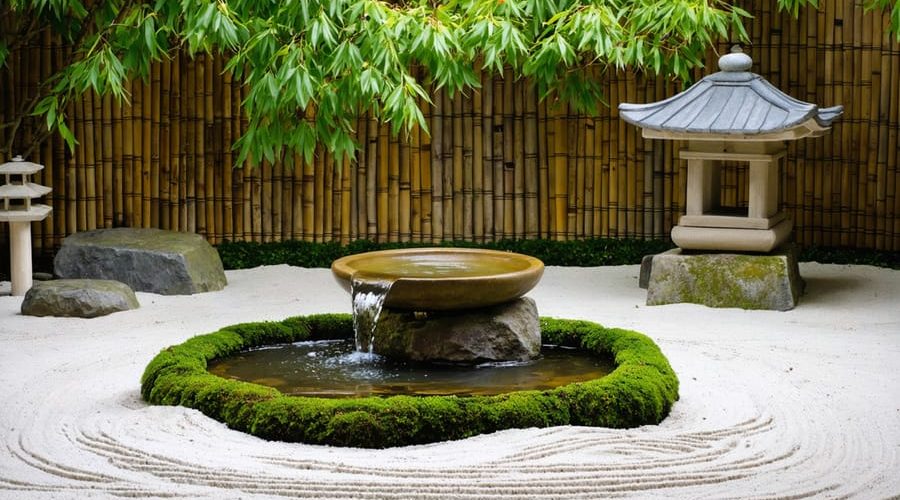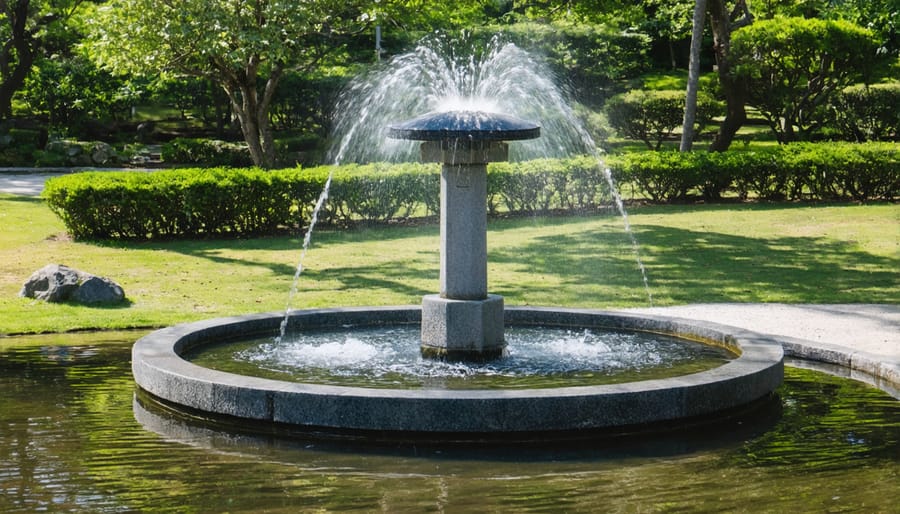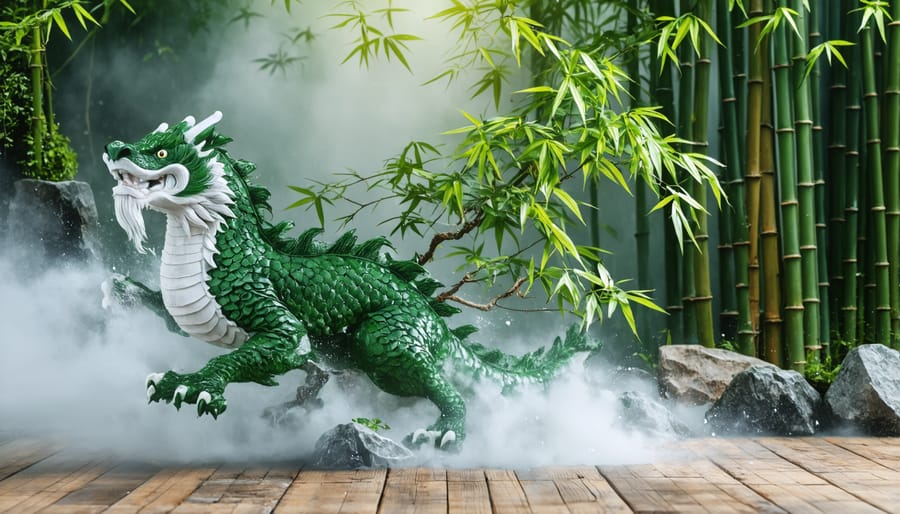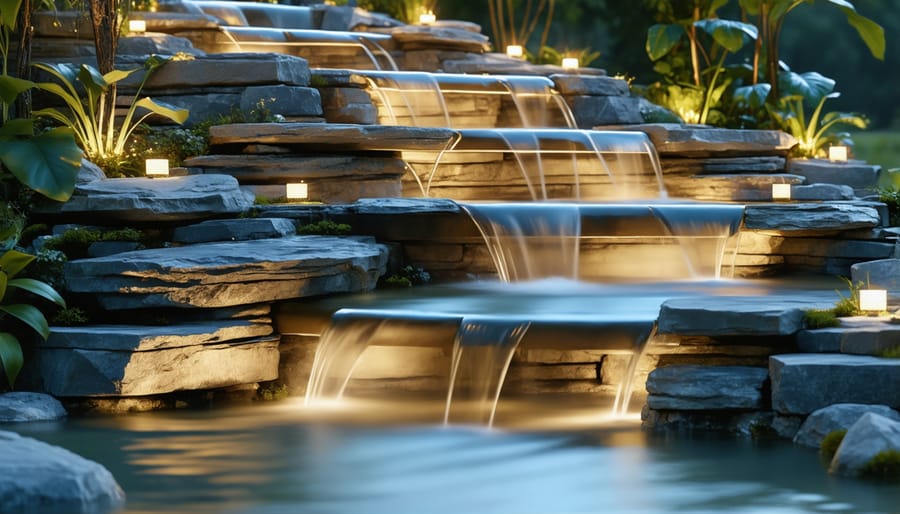
Transform Your Garden Into a Peaceful Oasis with These Serene Zen Water Features
Transform your outdoor space into a meditative sanctuary with a carefully designed water feature that captures the essence of Japanese tranquility. From the gentle cascade of a bamboo fountain to the rhythmic drip of a tsukubai basin, these serene zen garden designs create a peaceful retreat right in your backyard. Water features have been central to Japanese gardens for centuries, serving both practical and spiritual purposes – cleansing the mind while creating a harmonious connection between nature and architecture. Whether you’re seeking a simple tabletop fountain or planning an elaborate koi pond, the principles of zen water features remain consistent: simplicity, natural materials, and the strategic use of sound and movement to create a contemplative atmosphere. This guide will help you navigate the essential elements of zen water features, from selecting the perfect location to maintaining the delicate balance that makes these features so captivating.
Essential Elements of Zen Water Features
The Art of Simplicity
In the world of zen water features, less truly is more. The key to creating a serene and captivating water feature lies in embracing simplicity and clean design elements. Traditional Japanese aesthetics teach us that beauty emerges from stripping away the unnecessary, leaving only what’s essential.
Start with a clear vision of open space and minimal elements. Choose smooth, natural materials like polished stone or bamboo that create harmonious lines and gentle curves. Avoid cluttering your water feature with too many decorative elements – a single well-placed rock or carefully positioned plant can make a stronger statement than multiple ornaments.
Consider the flow of water itself as a design element. Opt for gentle cascades rather than dramatic waterfalls, and incorporate straight lines or subtle curves that guide the eye naturally through the space. Dark-colored basins can create mirror-like surfaces that reflect the sky and surrounding landscape, adding depth without complexity.
The surrounding space is just as important as the feature itself. Leave room for contemplation by maintaining clean, uncluttered areas around your water feature. This negative space helps create balance and allows the mind to rest, enhancing the overall zen experience.
Natural Materials and Textures
The essence of a zen water feature lies in its use of natural materials that create harmony with the surrounding environment. Natural stone forms the foundation of most zen water features, with smooth river rocks and carefully selected boulders serving as both functional and aesthetic elements. These stones not only direct water flow but also represent mountains and islands in miniature landscapes.
Bamboo plays a crucial role in zen water features, offering both visual appeal and practical functionality. Traditional bamboo water spouts (shishi-odoshi) create gentle, rhythmic sounds while moving water. You can also use bamboo for creating natural-looking pipes and channels that guide water through your feature.
Slate and granite are excellent choices for creating waterfalls or cascades, as their layered structure naturally guides water flow while maintaining an authentic appearance. For a more rustic look, consider incorporating weathered driftwood or locally sourced rocks that match your garden’s existing landscape.
When selecting materials, aim for those with organic textures and earthy colors. Avoid artificial materials like plastic or brightly colored stones that might disrupt the peaceful atmosphere you’re trying to create. Remember, the goal is to mirror nature’s subtle beauty rather than overshadow it.
Popular Zen Water Feature Styles
Tsukubai Fountains
Tsukubai fountains, originally found in Japanese tea gardens, serve both practical and spiritual purposes. These humble water features traditionally consisted of a stone basin where visitors would wash their hands and mouth before participating in tea ceremonies, symbolizing physical and spiritual cleansing.
Modern interpretations of tsukubai fountains maintain their minimalist charm while adapting to contemporary spaces. A typical setup includes a stone or ceramic basin, a bamboo spout (called a kakei), and often a decorative stone lantern nearby. Water gently trickles from the spout into the basin, creating a soothing sound that enhances the meditative atmosphere.
DIY enthusiasts can create their own tsukubai fountain using a shallow stone bowl, a bamboo water spout, and a small submersible pump. The key is to maintain simplicity – avoid overcrowding the space with decorations. Traditional designs often incorporate river rocks or moss around the base, helping the fountain blend naturally with its surroundings.
When placing a tsukubai in your garden, consider positioning it near an entrance or along a garden path. The height should be low, typically around knee-level, staying true to the humble nature of these features. Remember that less is more – the beauty of a tsukubai lies in its understated elegance and the peaceful atmosphere it creates through simple flowing water.

Shishi-odoshi
The shishi-odoshi, often called a “deer scarer” in English, is one of the most recognizable elements of Japanese garden design. This elegant bamboo device creates a mesmerizing rhythm that perfectly captures the essence of zen tranquility. As water slowly fills the bamboo tube, it eventually tips, making a distinctive “clok” sound as it strikes a stone or basin below before returning to its original position.
Originally designed to startle deer and other wildlife away from crops, these features have evolved into beloved garden elements that offer both visual and auditory appeal. The gentle filling and sudden release of water creates a peaceful, meditative pattern that helps mask urban noise and promotes relaxation.
Modern shishi-odoshi come in various sizes and materials, though traditional bamboo versions remain the most popular. Installing one requires careful balance and positioning to achieve the perfect rhythm – too fast, and the sound becomes intrusive; too slow, and you lose the hypnotic effect. The key is adjusting the water flow until you find that sweet spot where the sounds occur every few seconds.
When placing a shishi-odoshi in your garden, consider positioning it near a seating area where you can fully appreciate its soothing sounds. The peaceful clicking becomes a natural timer for meditation or simply helps create a serene atmosphere for outdoor relaxation.

Stone Basin Cascades
Stone basin cascades bring the soothing sounds of falling water to your garden through a series of naturally-stepped pools. This traditional zen feature mimics mountain streams, creating a peaceful flow that’s both visually striking and acoustically pleasing.
To create your own cascade, start with three to five stone basins of varying sizes, arranged in descending order. Natural stone basins, particularly those made from granite or slate, weather beautifully and provide an authentic look. The key is positioning each basin slightly lower than the previous one, allowing water to gently spill from one level to the next.
The magic lies in the spacing between basins. A drop of 6-12 inches between each level creates the perfect sound – not too loud to overwhelm, but prominent enough to mask urban noise. Small submersible pumps hidden in the lowest basin recirculate water to the top, maintaining the continuous flow.
Consider adding river rocks or small pebbles around the basins to disguise plumbing and create a more natural transition between levels. LED lights tucked beneath the water flow can add dramatic evening ambiance, while carefully placed moss or small ferns between the stones enhance the organic feel.
For maintenance, simply keep the basins clean of debris and ensure the pump remains submerged. These cascades are particularly striking when positioned near a seating area where you can fully appreciate their meditative qualities.
Creating the Perfect Zen Atmosphere
Sound Design
The sound of flowing water is central to creating a truly zen atmosphere, and getting it right can transform your space into a tranquil retreat. Different water features produce distinct sounds, from gentle trickles to more substantial flows, so it’s important to choose one that matches your desired ambiance.
For meditation spaces, aim for subtle, consistent sounds that won’t overwhelm conversation or disturb neighbors. A small bamboo spout with a gentle flow creates a soft, musical trickle that’s perfect for intimate settings. For larger spaces, consider layering different water sounds – perhaps combining a cascading waterfall with a subtle bubble fountain.
To fine-tune your water feature’s sound, adjust the flow rate using a variable speed pump. Higher flows create more energetic sounds, while slower flows produce gentler effects. The height water falls from also affects the sound – greater heights create more dramatic splashes, while shorter drops offer softer tones.
Experiment with different rocks and surfaces in your water feature. Flat stones create spreading ripples with subtle sounds, while rough-textured rocks produce more varied, natural tones. Remember, you can always adjust these elements until you achieve your perfect zen soundscape.
Lighting Considerations
Lighting can transform your zen water feature from a daytime meditation spot into a magical evening retreat. The key is to embrace subtle garden lighting techniques that enhance rather than overpower the peaceful atmosphere. Consider using soft, warm LED lights positioned beneath the water’s surface to create gentle rippling effects. Submersible spotlights work wonderfully when aimed at cascading water or decorative stones, while small path lights can safely illuminate the surrounding area.
For a truly authentic zen feel, opt for lantern-style fixtures with frosted glass, which cast a soft, diffused glow reminiscent of traditional Japanese gardens. Solar-powered options are particularly suitable, as they maintain the sustainable spirit of zen gardens while eliminating visible wiring. Remember to keep lighting minimal – the goal is to create subtle highlights rather than flood the space with brightness.
Place lights strategically to highlight key features like bamboo fountains or moss-covered rocks, but leave some areas in natural shadow to maintain that sense of mystery and tranquility essential to zen spaces.

Complementary Plantings
The art of integrating natural plants around your zen water feature can transform it from beautiful to breathtaking. Japanese maples are perfect centerpieces, offering graceful branches and stunning seasonal color changes that reflect beautifully in the water. Their delicate leaves create natural artwork as shadows dance across the water’s surface.
Consider adding bamboo along the perimeter of your water feature. Not only does it provide a classic zen aesthetic, but its gentle rustling adds another layer of tranquility to your space. For ground cover, moss is an excellent choice – it thrives in the humid environment around water features and creates a soft, green carpet that looks perfectly at home in a zen garden.
Water-loving plants like Japanese iris and lotus add authentic touches while helping to maintain water quality. Place them directly in shallow areas or in submerged pots. For vertical interest, consider ornamental grasses like Japanese forest grass or sedge, which add movement and sound without overwhelming the space.
Remember to keep plantings simple and minimal – zen gardens emphasize space and restraint. Choose plants in harmonious shades of green, with perhaps one or two accent plants for seasonal color. This thoughtful approach to plant selection ensures your water feature remains the focal point while creating a cohesive, peaceful atmosphere.
Maintenance for Lasting Tranquility
Maintaining your zen water feature isn’t just about keeping it running – it’s about preserving its peaceful essence. Regular water feature maintenance is key to ensuring your tranquil oasis remains a source of serenity rather than stress.
Start with a weekly cleaning routine: remove fallen leaves, debris, and any algae buildup using a small net. This simple task prevents pump clogs and keeps water crystal clear. Every month, check the water level and top it up as needed – evaporation is natural, but maintaining proper water levels protects your pump and preserves the peaceful sound of flowing water.
Clean your pump filters every 2-3 months, or more frequently if you notice reduced water flow. Gently remove the pump, clean the intake screen, and rinse any removable parts in clean water. This ensures smooth operation and prevents that unwanted buzzing that can disrupt your zen atmosphere.
In areas with hard water, tackle calcium deposits before they become obvious. Use a mixture of white vinegar and water to clean affected areas, paying special attention to rocks and spillways where water flows. This natural solution keeps your feature looking pristine without harsh chemicals.
During fall, invest extra time in removing leaves to prevent staining and decomposition. Consider using a fine mesh cover during heavy leaf-fall seasons while maintaining the feature’s aesthetic appeal. In winter, either drain the feature completely or keep it running to prevent freeze damage, depending on your climate.
Remember to check all connections and seals annually for any signs of wear or leakage. Address small issues promptly to prevent larger problems that could disturb your peaceful sanctuary. With these simple maintenance steps, your zen water feature will continue to be a source of tranquility for years to come.
Bringing a zen water feature into your outdoor space offers more than just visual appeal – it creates a sanctuary of peace and tranquility right in your backyard. These elegant additions help reduce stress, mask unwanted noise, and attract beautiful wildlife while adding value to your property. Whether you choose a simple bamboo fountain, a meandering stream, or a koi pond, your zen water feature will become a cherished spot for meditation, relaxation, and connection with nature. Remember, creating your perfect zen water feature is a journey that evolves with time and care. Start small if you need to, and let your water feature grow along with your experience. The peaceful sounds of flowing water and the subtle beauty of Japanese-inspired design will transform your outdoor space into the serene retreat you’ve always dreamed of.
